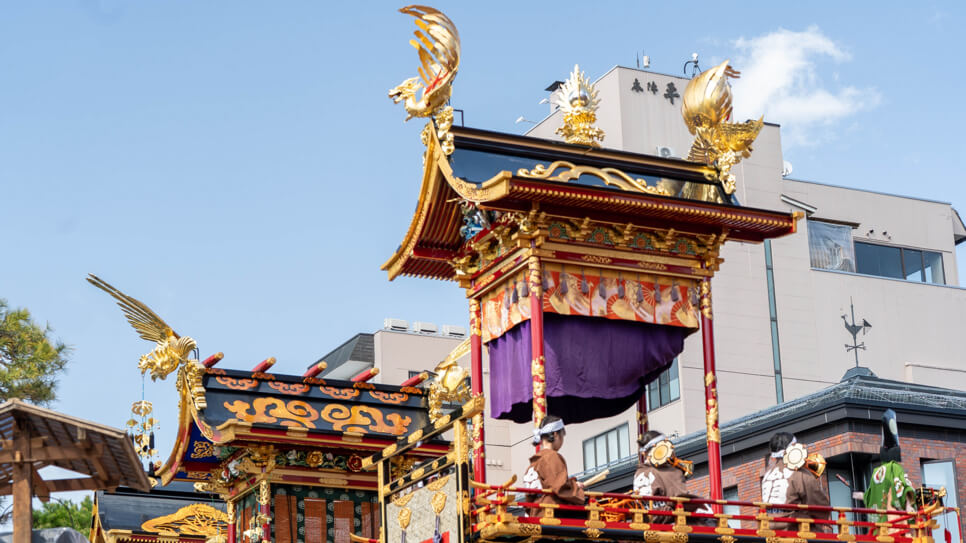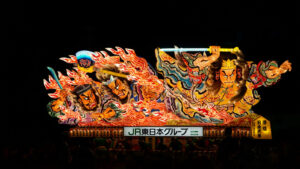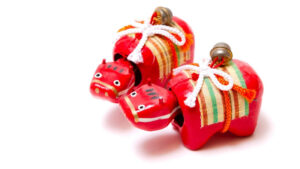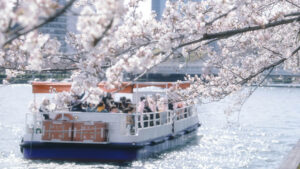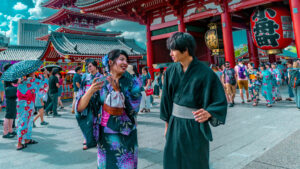In Japan, there is a deeply rooted culture of living in harmony with the changing seasons—spring, summer, autumn, and winter.
Seasonal events and festivals are held throughout the year, each reflecting gratitude for nature, connections with family, and long-standing traditions rooted in regional beliefs. These occasions add color and meaning to daily life.
This article introduces major seasonal events in Japan, organized month by month in an easy-to-understand format. It’s not only helpful for planning your trip, but also a great way to deepen your understanding of Japanese culture.
Contents
- 1 The Charm of Japan’s Four Seasons and Traditional Events
- 2 Spring (March–May) Events – A Season of New Beginnings
- 3 Summer Events (June–August) – A Season of Nature and Prayer
- 4 Autumn (September–November) Events: A Season of Harvest and Gratitude
- 5 Winter Events (December – February): A Season of Stillness and Reflection
The Charm of Japan’s Four Seasons and Traditional Events
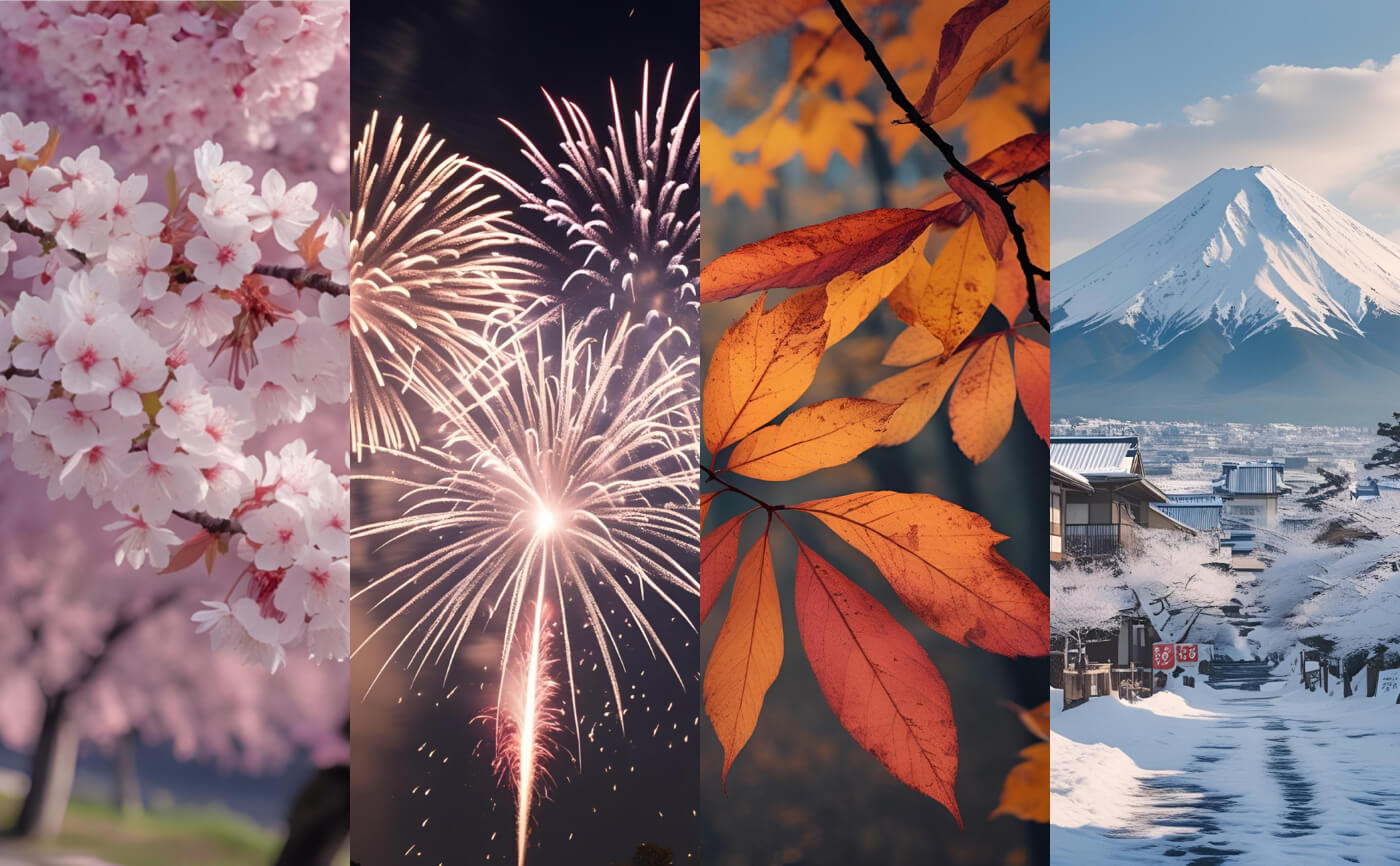
A Culture That Lives in Harmony with the Seasons
Japan is a country where the four seasons—spring, summer, autumn, and winter—are clearly defined. Living in an environment where people feel the changing of nature, they have developed unique seasonal events and customs over many generations.
As flowers bloom, the wind shifts, and the air turns crisp, a wide range of events and traditions take place across the country in tune with nature’s rhythms.
These seasonal events are more than just occasions—they nurture faith, family ties, and community bonds, adding rhythm and meaning to everyday life. Japan’s seasonal culture is reflected in its landscapes, food, clothing, and even language, making it one of the country’s most captivating aspects for international visitors.
Living in Harmony with Nature
The Japanese way of life is deeply rooted in a sensitivity to nature.
Seasonal traditions such as hanami (cherry blossom viewing) and momijigari (autumn leaf viewing) are iconic examples.
People listen to the gentle rain during the rainy season, feel the elegance in cicadas’ songs and summer thunderstorms, and find joy in everyday seasonal moments.
By honoring the seasons through traditional events, the Japanese have long expressed gratitude for nature and celebrated each seasonal shift.
This reflects a mindset not of controlling nature, but of coexisting with it.
Faith and Tradition Behind Annual Events
Many of Japan’s seasonal events are closely connected to Shinto, Buddhism, and long-standing folk beliefs.
For example, during the New Year, people visit shrines for hatsumōde to pray for family safety and good health.
During Obon, they welcome the spirits of ancestors and pay their respects to the deceased.
Other traditions like the Doll Festival (Hinamatsuri) in spring and the 7-5-3 Festival (Shichi-Go-San) in autumn celebrate children’s growth.
These events are both spiritual practices and opportunities to strengthen bonds within families and communities.
To many Japanese, they are not merely customs—they provide rhythm to life and serve as meaningful moments for reflection and renewal.
Why Seasonal Events Appeal to International Visitors
In recent years, Japan’s seasonal events have become increasingly popular among foreign visitors.
In spring, tourists flock to see the cherry blossoms, and in summer, many enjoy fireworks festivals in traditional yukata.
Participating in shrine or temple festivals allows travelers to experience the spiritual depth and cultural richness of Japan.
Seasonal treats and decorations also attract attention—such as ehōmaki (lucky sushi rolls) for Setsubun,
osechi ryōri (New Year’s cuisine), or chestnut desserts in autumn.
Through these experiences, visitors not only witness Japanese culture, but also taste and feel it.
Rather than simply watching, joining in these traditions helps create lasting, heartfelt memories of Japan’s seasonal beauty.
The Japanese Sensibility for Savoring the Seasons
Japanese people have long placed special value on feeling and appreciating the changing seasons.
They welcome the arrival of spring with joy, endure the summer heat with creativity, give thanks for autumn’s harvest, and find calm in the quiet of winter.
This way of living—mindfully embracing each seasonal shift—is at the heart of Japanese culture.
This seasonal awareness is not only seen in daily life, but also reflected in annual events, food, clothing, and even architectural design.
For visitors to Japan, this deep connection to the seasons is one of the most memorable and distinctive aspects of the culture.
Seasonal Expressions in Clothing, Food, and Living Spaces
Japan’s sensitivity to the seasons is reflected in every aspect of daily life.
In clothing, people wear soft, light-colored outfits in spring, breathable yukata in summer, autumn-inspired colors like deep reds and browns in fall, and layered garments in winter to stay warm while embracing the seasonal mood.
In food, the concept of shun—enjoying ingredients at their seasonal peak—is deeply valued. Bamboo shoots in spring, chilled sōmen noodles in summer, chestnut rice in autumn, and hot pot dishes in winter all bring the changing seasons to the dinner table.
In housing, elements like sliding paper doors (shōji), folding screens (fusuma), wind chimes in summer, and kotatsu (heated tables) in winter show how Japanese homes are designed for comfort in each season. Traditional architecture embodies the wisdom of living in harmony with nature.
Connecting Families and Communities Through Seasonal Events
Seasonal events in Japan are not just festivals—they also play an important role in bringing people together.
For example, families visit shrines together for hatsumōde (New Year’s visit), write wishes on strips of paper during Tanabata, and join bon odori dances at summer festivals that span generations. These customs reinforce family bonds and foster a strong sense of community within neighborhoods and towns.
Timing Your Trip Around Seasonal Events
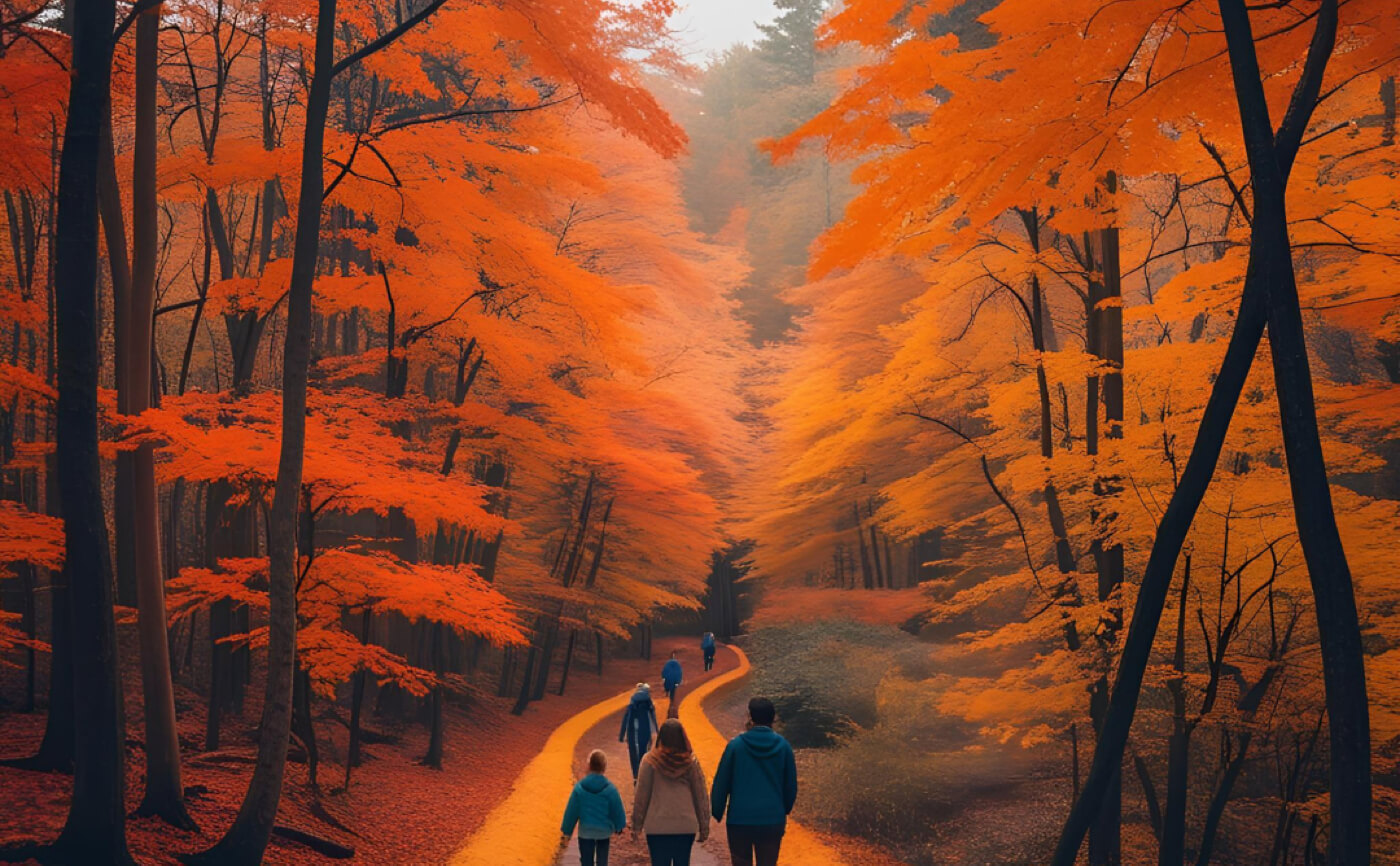
If you’re planning to visit Japan, aligning your travel with the country’s seasonal events is highly recommended.
Whether it’s cherry blossom season in spring, vibrant summer festivals, autumn leaves, or New Year’s traditions, cities and towns across Japan come alive with unique energy during these periods.
These special times offer experiences that go far beyond ordinary sightseeing.
By traveling during event seasons, you not only enjoy beautiful scenery and local festivities but also gain deeper insight into Japanese daily life and culture.
It’s a chance to witness how people celebrate, gather, and express gratitude through time-honored traditions—an unforgettable aspect of any trip to Japan.
Travel Plans Aligned with Popular Events
If your goal is to experience Japanese culture, planning your trip around seasonal events can greatly enhance your visit. Here are some recommended times and events:
- March–April: Cherry Blossom Viewing (Hanami)
Parks like Ueno in Tokyo and the Philosopher’s Path in Kyoto are illuminated and lined with food stalls, creating a festive atmosphere. - July–August: Summer Festivals and Fireworks
Major events such as the Tenjin Festival in Osaka and the Sumida River Fireworks in Tokyo take place, attracting huge crowds and lively celebrations. - November: Shichi-Go-San and Autumn Leaves
At shrines, you’ll see children in traditional kimono being celebrated—a unique glimpse into Japanese family life during peak foliage season. - December–January: Christmas and New Year
Only in Japan can you enjoy dazzling Christmas illuminations followed by the spiritual calm of the New Year’s first shrine visit (hatsumōde), especially in the cities.
Where to Experience Traditional Japanese Events
Japan offers many places where tourists can take part in traditional events and cultural experiences:
- Kyoto (Tea Ceremony, Kimono, Shrine Festivals)
The city offers authentic cultural experiences like tea ceremonies and seasonal festivals. The Gion Festival at Yasaka Shrine is especially famous. - Asakusa (Tokyo)
At Sensō-ji Temple, you can participate in events like Setsubun and New Year’s celebrations. Many facilities provide explanations in multiple languages for tourists. - Shirakawa-go and Takayama (Gifu Prefecture)
These areas preserve traditional Japanese village life and seasonal customs. The Takayama Spring Festival and winter snow events are highlights. - Regional Hot Spring Towns
Places like Akita (Namahage ritual) and Aomori (Nebuta Festival) allow visitors to engage with deeply local, traditional practices that offer a more immersive cultural experience.
Spring (March–May) Events – A Season of New Beginnings
In Japan, spring is a season of both closure and fresh starts. As the cold weather begins to ease and flowers start to bloom, many life milestones take place—graduations, school entrance ceremonies, and job changes, to name a few.
This time of year is also rich in seasonal traditions, with many of Japan’s most iconic events occurring between March and May.
In this section, we’ll introduce the spring events that shape both the rhythm and emotion of daily life in Japan.
March Events
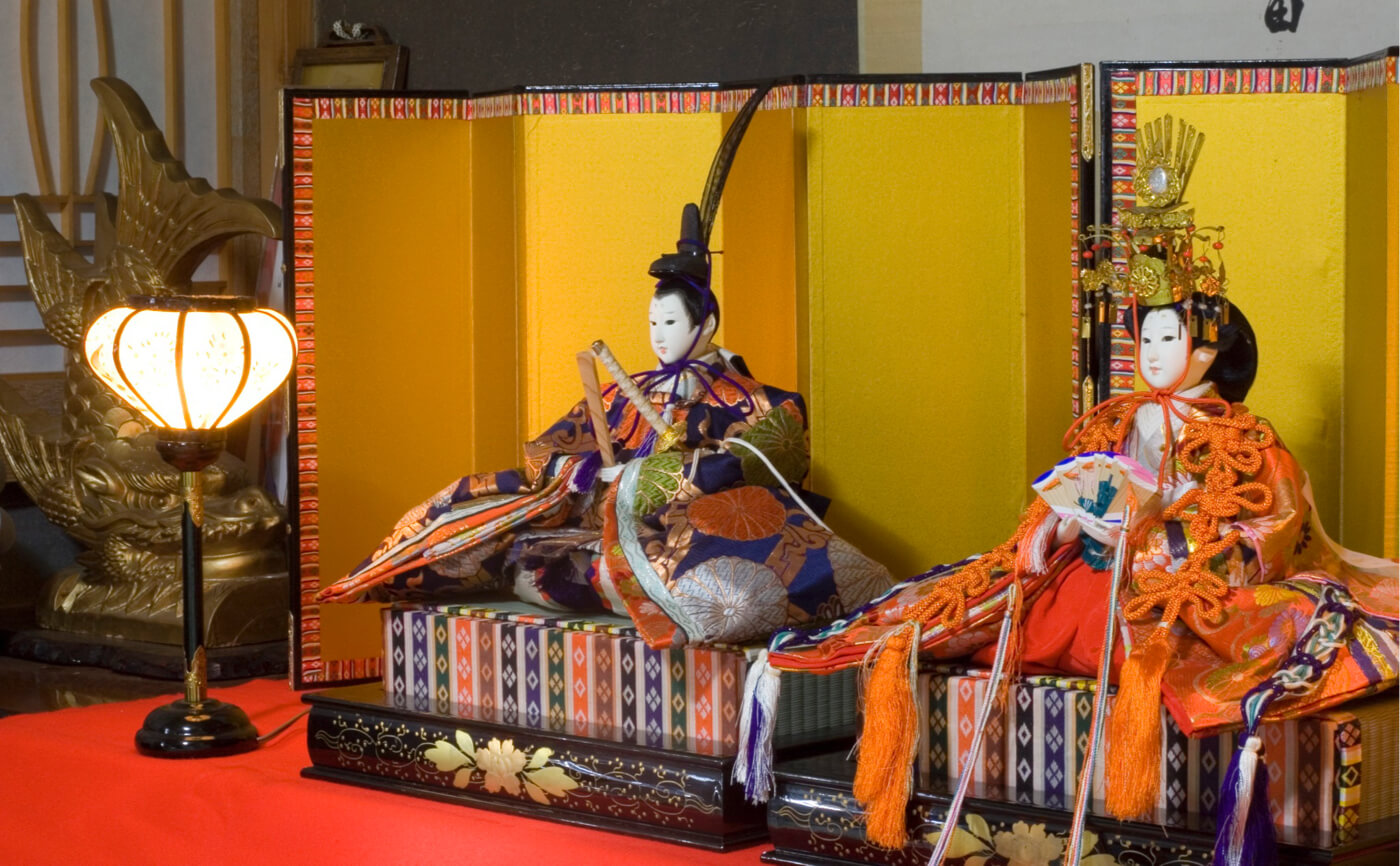
March marks a major seasonal transition in Japan. As the chill of winter gradually fades, people begin to sense the arrival of spring.
This month is filled with emotional moments of parting and new encounters—school graduation ceremonies are held, and for working adults, job transfers and personnel changes are common.
Many events during March symbolize life’s turning points, often accompanied by feelings of gratitude and renewed determination.
March is also known for uniquely Japanese customs like the Doll Festival (Hinamatsuri) and White Day.
These events reflect both traditional family-oriented celebrations and modern gift-giving culture, showcasing the flexibility and richness of Japanese values in everyday life.
As the month progresses, cherry blossom forecasts begin to dominate national news, and the country’s collective anticipation for spring reaches its peak.
Hinamatsuri (Doll Festival) – A Day to Celebrate Girls’ Health and Happiness
Every year on March 3rd, Japan celebrates Hinamatsuri, also known as the “Peach Festival.”
It is a traditional event to wish for the healthy growth and happiness of girls. Families decorate their homes with ornamental dolls and celebrate with foods like chirashi-zushi, hina-arare (colorful rice crackers), and sweet white sake.
The centerpiece of the display is the dairi-bina—dolls representing the emperor and empress—surrounded by court attendants and musicians in traditional Heian-era dress.
The elegant presentation reflects Japan’s refined aesthetic and deep respect for tradition.
Hinamatsuri is more than a celebration; it is a symbol of Japanese family values and the cultural importance of nurturing children.
White Day – Japan’s Unique Gift-Giving Tradition
March 14th is known as White Day, a uniquely Japanese occasion when men give return gifts to women from whom they received chocolates on Valentine’s Day.
Originating in Japan in the 1980s, the day was promoted by the confectionery industry and has since become a cultural norm.
Common gifts include candy, marshmallows, cookies, or small accessories. In recent years, the tradition has expanded to include “tomo-choco” (friend chocolate) and “thanks-choco” for coworkers and friends, regardless of gender—reflecting Japan’s flexible and evolving approach to gift-giving.
Graduation Ceremonies and the Start of Cherry Blossom Season
March is also the month of graduation ceremonies at schools across Japan.
These solemn ceremonies feature the singing of school songs and farewell messages, often bringing tears and heartfelt appreciation as students close one chapter of life and prepare to begin another.
By late March, cherry blossom season begins to approach. The Japan Meteorological Agency releases its much-anticipated cherry blossom forecast, sparking excitement across the country.
As families prepare for hanami (flower viewing), anticipation for spring fills the air. March, with its blend of farewells and new beginnings, is deeply symbolic—a season of transition and reflection for many Japanese people.
April Events
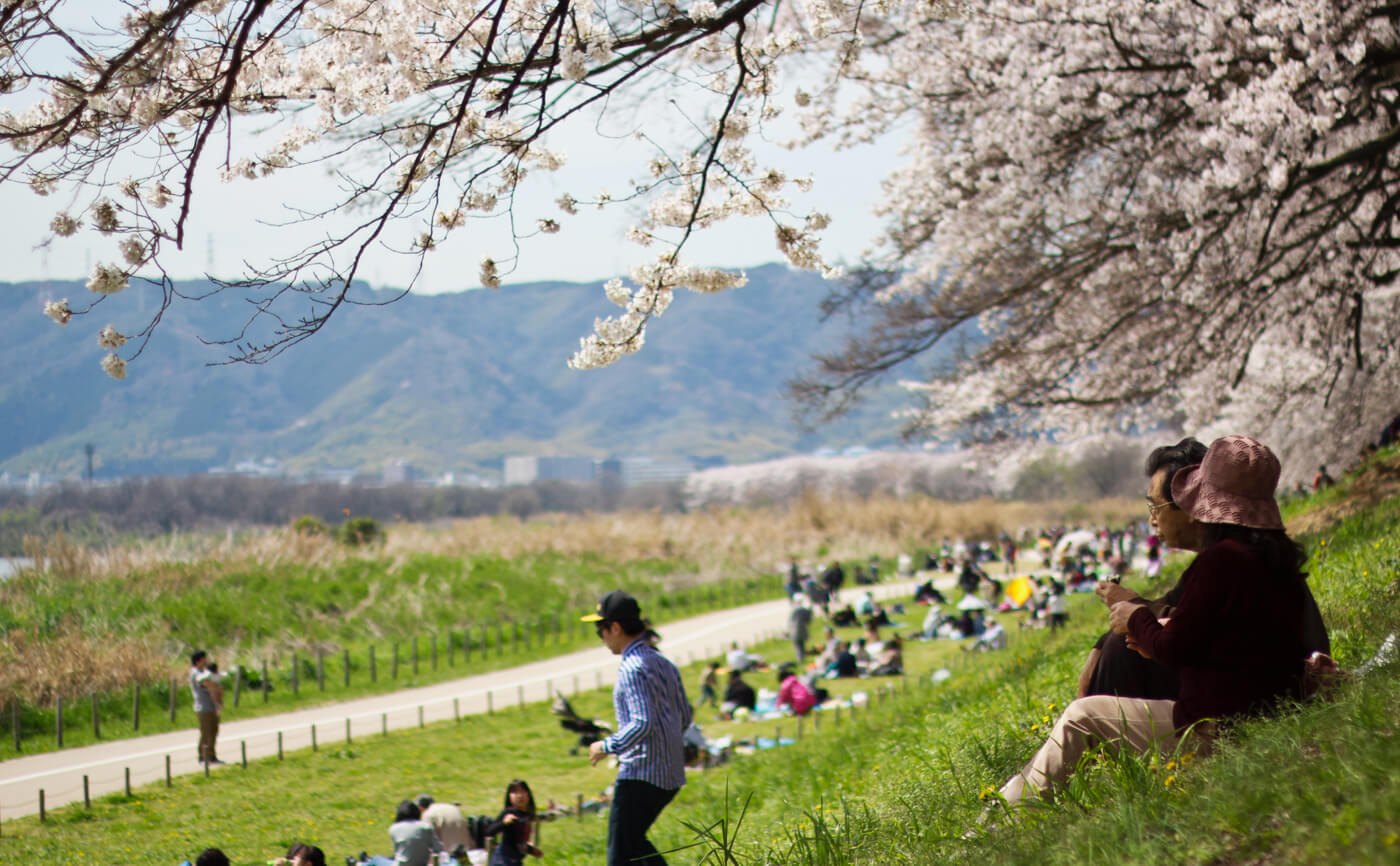
April marks the true beginning of the year in Japan.
Most schools and businesses start their new fiscal and academic year this month, making it a time when many people begin new chapters—whether entering school, starting a new job, or moving to a new role.
At the same time, cherry blossoms bloom across the country, brightening spirits and inspiring optimism.
This overlap of natural beauty and life milestones makes April one of the most uplifting and hopeful months in Japanese culture.
Hanami (Cherry Blossom Viewing) – Celebrating Spring Under the Blossoms
One of the most iconic spring customs in Japan is hanami, or cherry blossom viewing.
In April, when the cherry trees are in full bloom, people gather in parks and along riversides to enjoy food, drinks, and the beauty of the blossoms.
Popular spots include Ueno Park and Meguro River in Tokyo, as well as Maruyama Park and the Kamo River in Kyoto.
These events often feature food stalls and evening illuminations, adding to the festive atmosphere.
For the Japanese, cherry blossoms symbolize both the fleeting nature of life and new beginnings.
Even the act of petals falling is admired as poetic and beautiful.
Hanami is also hugely popular among international tourists, many of whom plan their trips around this unique seasonal celebration.
Entrance Ceremonies – A New Stage in Life
April marks the beginning of the school year in Japan, and entrance ceremonies are held at schools nationwide—from kindergartens to universities.
Students wear brand-new uniforms and attend the ceremonies with their families, creating a touching and hopeful scene that defines spring in Japan.
Because entrance ceremonies often coincide with the blooming of cherry blossoms, it’s common for commemorative photos to be taken with sakura trees in the background.
This reinforces the cultural association of “cherry blossoms = new beginnings,” a sentiment that deeply resonates with the Japanese sense of renewal.
For visitors, this offers a glimpse into how seriously Japanese people cherish life’s milestones.
The Start of a New Fiscal and Social Year
In Japan, April is not just the start of the school year but also the beginning of the new fiscal and professional calendar.
Companies hold welcoming ceremonies for new hires, departments restructure, and roles often shift—creating a widespread atmosphere of renewal and fresh goals.
People also take this time to set new personal goals or buy new planners, treating the season as an opportunity to reset and refocus.
The “culture of fresh starts” is deeply rooted in Japanese society.
While this may seem unique to foreign visitors, for Japanese people, April is naturally associated with the beginning of a “new self.”
It’s a season filled with both personal and collective momentum.
May Events
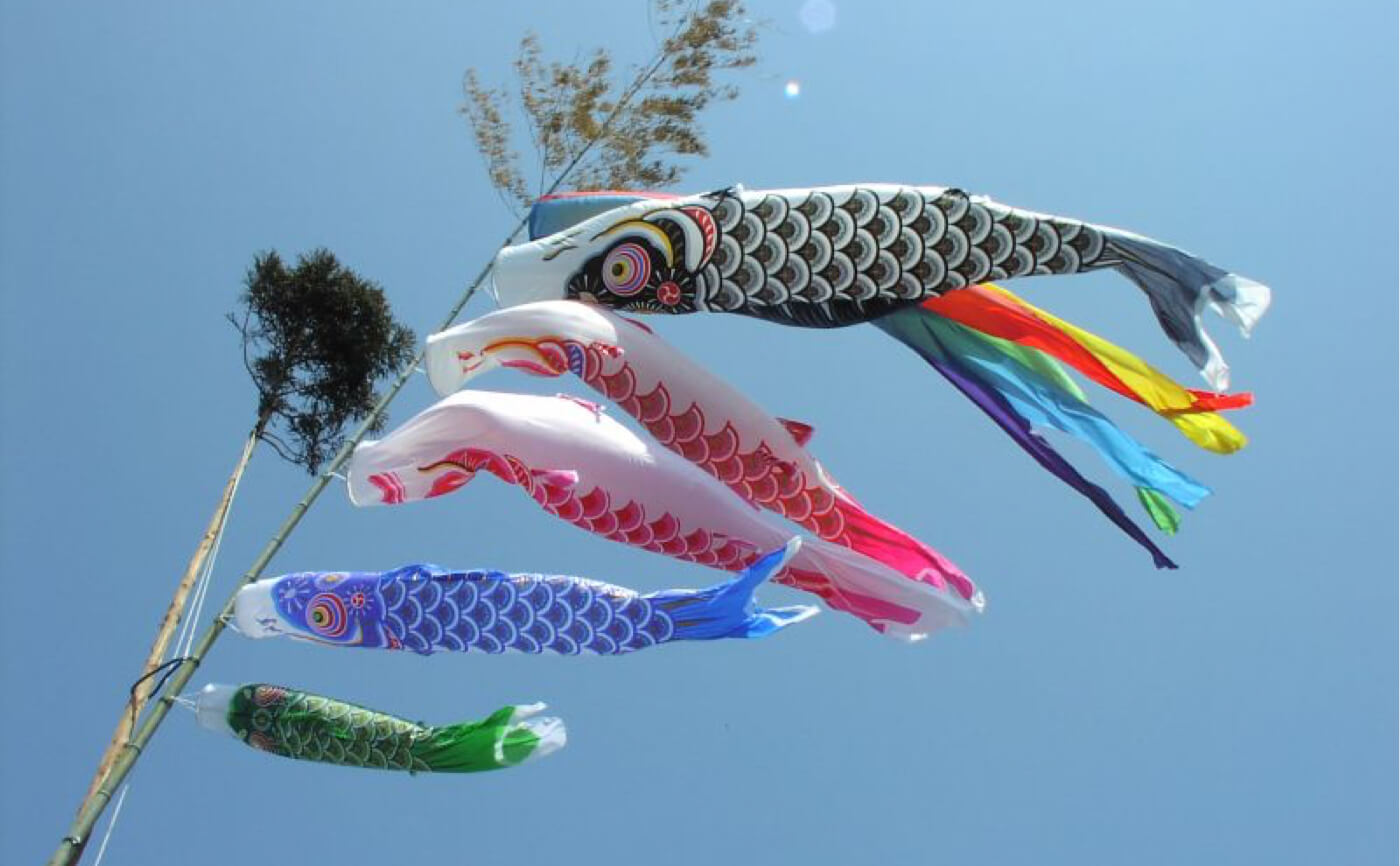
May marks the transition from spring to early summer in Japan.
With mild weather and plenty of sunny days, it’s the perfect time for outdoor activities and excursions.
This month features numerous nature-related events and festivals, family outings, and scenic views of lush greenery.
Notable highlights include Children’s Day, which celebrates the growth and well-being of children, and Golden Week, one of Japan’s most anticipated holiday seasons.
Children’s Day (Tango no Sekku) – Celebrating Boys’ Growth and Health
May 5th is known as Children’s Day in Japan.
Originally called Tango no Sekku, this traditional festival is specifically meant to wish for the healthy growth and happiness of boys.
Families celebrate by displaying koinobori (carp streamers) outside their homes and decorating interiors with samurai helmets and warrior dolls.
The carp, which swim upstream with great strength, symbolize success and perseverance in life.
Other customs include bathing in shobu-yu (iris-scented hot water) and eating seasonal sweets like kashiwa mochi and chimaki, which are believed to promote health and ward off evil.
Golden Week – Major Holidays and Peak Travel Season
Japan’s longest holiday period, known as Golden Week (GW), occurs in early May.
It spans several national holidays, including Showa Day (April 29), Constitution Memorial Day (May 3), Greenery Day (May 4), and Children’s Day (May 5).
During this time, schools and businesses often close for an extended break, making it a peak season for domestic and international travel.
Although popular destinations and public transportation become extremely crowded, the atmosphere is lively, with many festivals and events held across the country.
For foreign visitors, Golden Week provides a chance to observe Japanese leisure culture and travel habits up close.
Season of Fresh Greenery and Picnic Culture
May is also known as the season of fresh greenery, when newly sprouted leaves create vibrant landscapes.
Low humidity and pleasant temperatures make it an ideal month for outdoor activities.
Parks, riversides, and mountain areas are filled with families and groups enjoying picnics, hiking, and barbecues.
In Japan, it’s customary to bring homemade lunch boxes and enjoy meals outdoors, a tradition known as picnic culture.
Following the cherry blossom season in April, May continues to be a popular time for enjoying seasonal outings and beautifully prepared picnic meals.
Summer Events (June–August) – A Season of Nature and Prayer
Summer in Japan is a season deeply intertwined with nature.
From the lush green rice fields to vibrant shrine festivals and the cicadas’ evening chorus, the season brings a strong sense of connection to the natural world.
Many events during this time are expressions of gratitude and prayers to nature’s power.
June marks the beginning of summer and is known for the rainy season, rice planting traditions, and cultural practices that celebrate the changing of seasons.
It’s a time when the rhythms of daily life align closely with the environment, offering unique opportunities to experience Japan’s seasonal customs and spirituality.
June Events
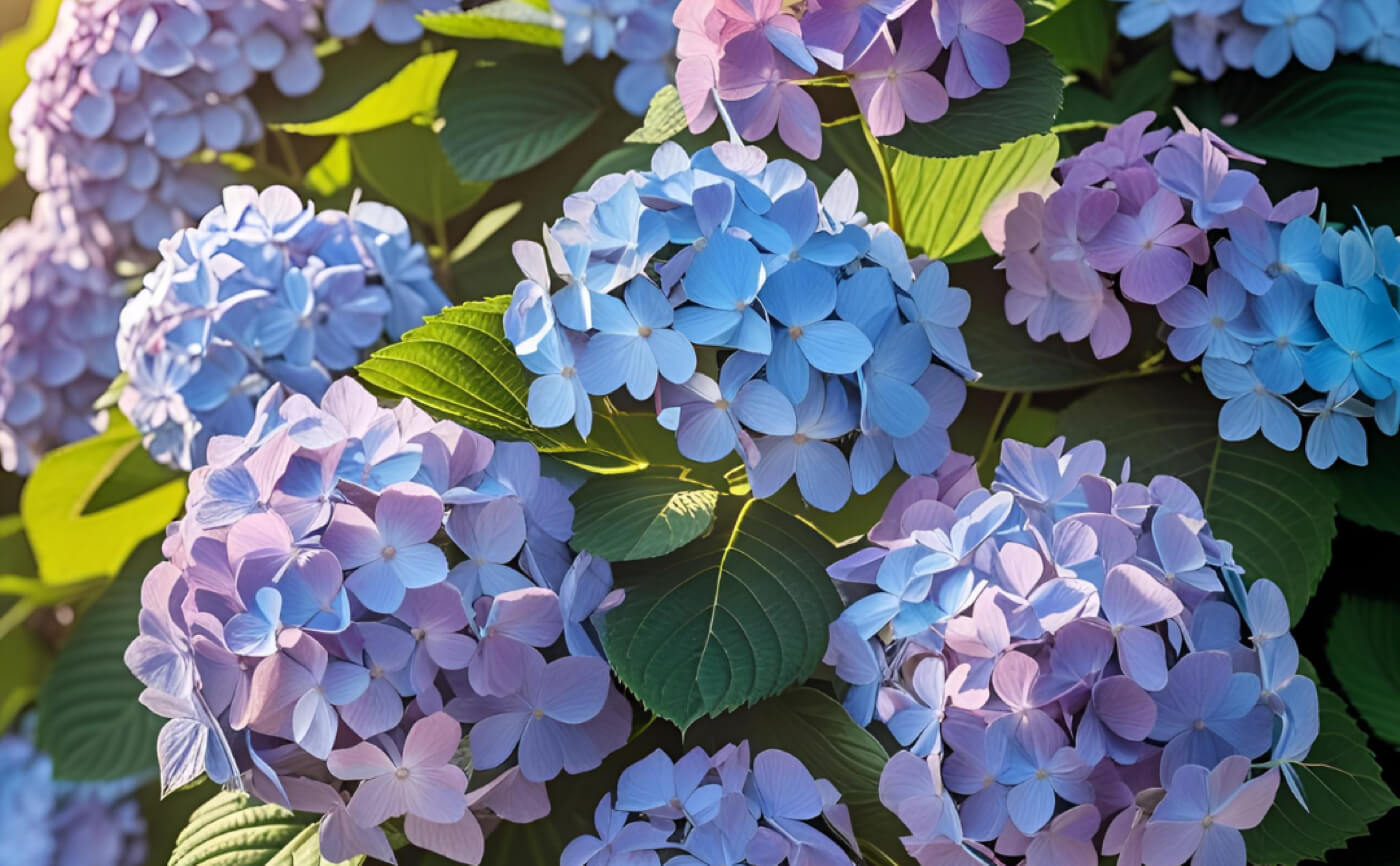
June is a month in Japan known for its quiet atmosphere and sense of moisture. As the rainy season (tsuyu) begins across the country, the gentle, continuous rainfall brings a serene beauty to both the scenery and daily life.
Although this season may seem uneventful, it actually includes several important customs deeply connected to nature and agriculture.
The rain in June is vital for crops, and this is when rice planting (taue) takes place in many regions.
Additionally, hydrangeas bloom in full glory during this month, especially around temples and shrines, where they create ethereal landscapes under the rain.
The Start of Tsuyu – Welcoming Summer with Rain
June marks the beginning of tsuyu, Japan’s rainy season. Lasting for about a month, it is an essential part of the transition into summer.
While the constant drizzle and high humidity can feel heavy, this period is crucial for nourishing plants and rice paddies.
Rice Planting and the Minazuki Ritual
June is an important time for agriculture, with rice planting occurring in many rural areas. Fields are filled with water, and rows of young rice shoots wave gently in the breeze—an iconic image of the Japanese countryside.
Some communities hold rice-planting festivals and rituals to pray for a bountiful harvest.
At the end of June, shrines conduct a purification ritual called “Nagoshi no Harae,” meant to cleanse impurities from the first half of the year and ensure good health for the summer.
It is also a time to enjoy a traditional Japanese sweet called minazuki—a triangle-shaped rice cake topped with red beans, eaten to ward off misfortune and promote well-being.
Hydrangeas and Temple Pilgrimages
One of the symbols of June is the hydrangea. Their vivid colors appear especially striking when wet with rain, giving them a tranquil elegance.
Temples and shrines known for their hydrangea displays offer an ideal setting to reflect on the changing seasons.
Famous spots include Meigetsu-in in Kamakura—nicknamed the “Hydrangea Temple”—and Mimuroto-ji in Kyoto. These locations are at their most beautiful on rainy days, offering visitors a peaceful, seasonal experience unique to Japan.
July Events
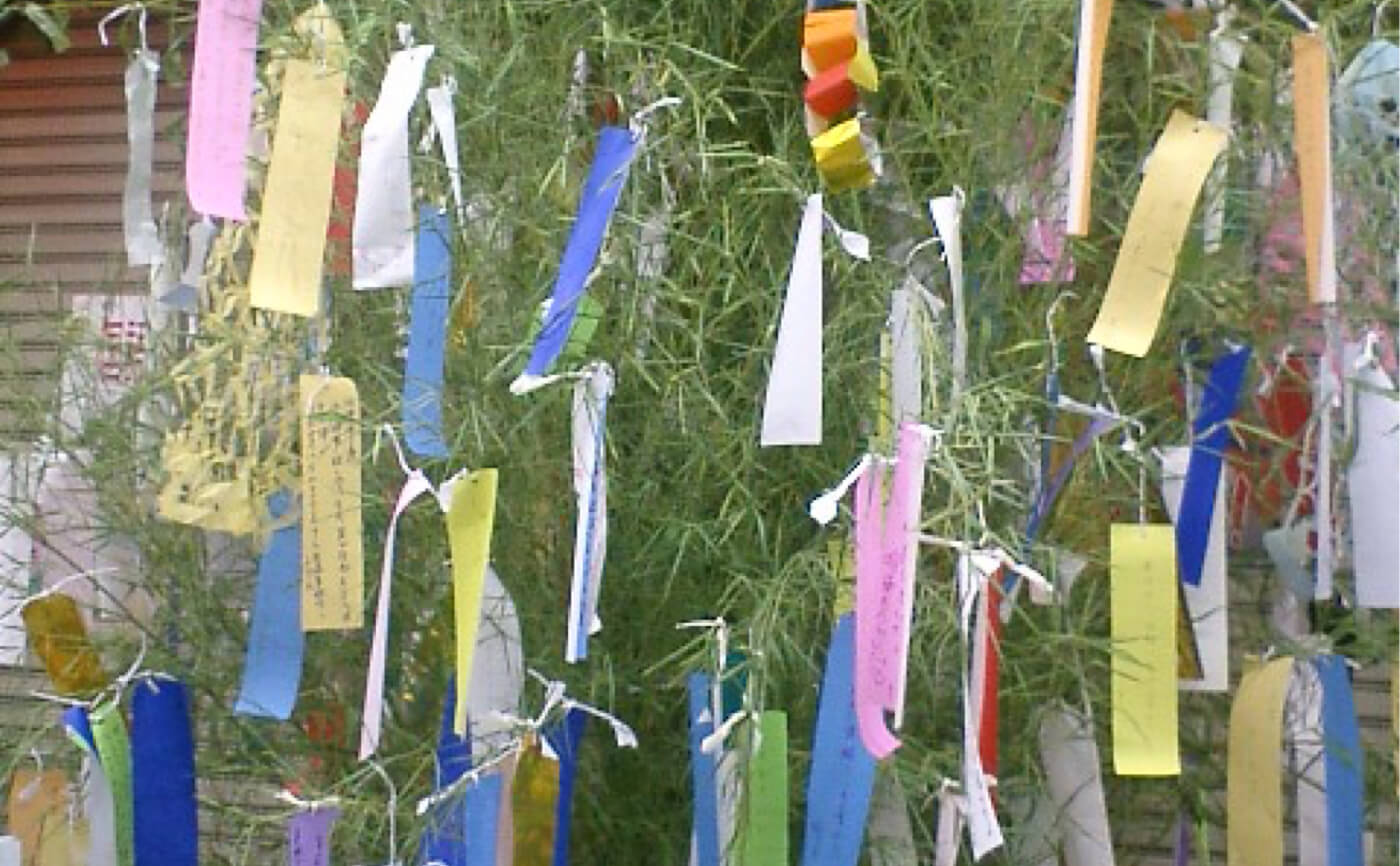
July marks the true beginning of summer in Japan. As schools wrap up their final lessons before summer break, cities begin to fill with the sounds of summer festivals and wind chimes.
It is a season where people become more connected to nature, and outdoor activities and traditional events become more prominent across the country.
This month also celebrates romantic customs such as Tanabata, where people look to the night sky with hope. The mix of summer heat with emotional charm and vibrant festivities makes July a uniquely Japanese seasonal experience.
Tanabata – The Star Festival of Wishes
July 7 is Tanabata, the “Star Festival.” It is based on a Chinese legend about the once-a-year reunion of the deities Orihime and Hikoboshi across the Milky Way. In Japan, people write their wishes on colorful paper strips (tanzaku) and hang them on bamboo branches.
Tanabata decorations can be seen in malls, train stations, schools, and more. Some regions host large-scale festivals, such as the Sendai Tanabata Festival and the Shonan Hiratsuka Tanabata Festival.
The sight of vibrant streamers swaying in the breeze is not only culturally significant but also highly photogenic.
Opening of the Sea and Mountains – The Start of Outdoor Season
July also marks the official opening of beaches and mountain trails, celebrated through ceremonies known as “umi-biraki” (sea opening) and “yama-biraki” (mountain opening). These events include rituals to pray for safety and welcome the start of the summer season.
After the sea opens, beaches across Japan become lively with people enjoying swimming and marine sports. Similarly, mountain trails—including routes up Mount Fuji—open to climbers, attracting adventurers nationwide.
This is a perfect time to immerse yourself in Japan’s outdoor lifestyle and nature-focused traditions.
Gion Matsuri and Other Summer Festivals Nationwide
July is peak season for summer festivals throughout Japan. The most famous among them is Kyoto’s Gion Matsuri, a historic festival with over a thousand years of tradition.
Its highlight, the Yamahoko Parade, features massive and ornately decorated floats, drawing huge crowds from around the world.
Each local festival has its own charm, with mikoshi (portable shrines), bon-odori (folk dances), and street food stalls creating a festive atmosphere.
Wearing a yukata (summer kimono) adds to the immersive experience and lets you fully enjoy the spirit of a Japanese summer celebration.
August Events

August is the peak of summer in Japan, filled with vibrant energy. Schools are on summer vacation, and families and friends travel, enjoy leisure activities, and return to their hometowns. During this time, numerous events blending traditional culture and modern entertainment take place across the country.
Among the most iconic summer traditions are fireworks festivals, Obon, and Bon Odori—deeply rooted in the hearts of the Japanese people.
Fireworks Festivals – A Symbol of Japanese Summer
Fireworks festivals are synonymous with August in Japan. Held nationwide, these events light up the night sky with stunning bursts of color, creating a magical atmosphere.
Often held by riversides or beaches, they attract crowds of people dressed in yukata (summer kimono), who enjoy local street food while watching the spectacular displays.
Famous festivals include the Sumida River Fireworks Festival in Tokyo and the Nagaoka Fireworks Festival in Niigata. These events are especially popular among international visitors, with many planning their trips around the festival dates.
Obon – A Traditional Festival to Welcome Ancestral Spirits
Obon is a Buddhist tradition deeply rooted in Japanese culture. It is a time to welcome and honor the spirits of ancestors. Many people return to their hometowns, visit family graves, and express gratitude to their forebears.
Although practices vary by region, Obon typically takes place from August 13 to 16.
At home, families set up altars (shōryōdana) and light “welcoming” and “sending-off” fires to receive and return the spirits. Even today, many companies provide summer holidays during this time, making it a valuable period for family bonding.
Bon Odori – A Beloved Summer Dance Tradition
Bon Odori is a traditional dance held during the Obon period. Originally a religious event to honor ancestral spirits, it is now widely enjoyed as part of local summer festivals.
People of all ages join hands and dance in circles to regional folk songs, creating a warm, communal atmosphere.
Each region has its own unique dances and music, passed down through generations. Wearing a yukata and joining the dance circle is a great way for visitors to interact with locals and experience the true spirit of a Japanese summer night.
Autumn (September–November) Events: A Season of Harvest and Gratitude
Autumn in Japan is a time to appreciate the richness of nature. As temperatures become milder and the air turns crisp, the vivid colors of autumn foliage and seasonal delicacies bring beauty and flavor to daily life.
This season centers around the themes of “harvest” and “gratitude,” with many traditional events held to honor ancestors and show respect for nature’s bounty.
September Events

September marks the time when the intense summer heat begins to subside and the signs of autumn become noticeable. As nature regains its calm and the air turns crisp, many events during this season emphasize connections with family and appreciation for the natural world.
On Respect for the Aged Day, people express gratitude to the elderly. On the Autumnal Equinox Day, they honor their ancestors and give thanks to nature. Additionally, Japan’s refined tradition of “Tsukimi,” or moon viewing, is celebrated on clear September nights, offering a poetic experience unique to this season.
Respect for the Aged Day – Gratitude to Elders
The third Monday of September is known as “Respect for the Aged Day” (Keirō no Hi). This national holiday is dedicated to honoring the elderly for their lifelong contributions to society and wishing them good health and longevity. Families gather for meals, and grandchildren often give heartfelt gifts, creating warm and cherished moments across generations.
In recent years, more families have started showing appreciation through handwritten letters, video messages, or travel gifts. It is one of the holidays that best reflects Japan’s deep-rooted cultural value of respecting elders.
Autumnal Equinox Day – Honoring Ancestors and Nature
Falling around September 23, Autumnal Equinox Day marks the point when day and night are nearly equal in length. In Buddhist tradition, this period is called “Ohigan,” during which families visit ancestral graves to pay respects and offer prayers. It is a time to reflect on life and express gratitude for both family ties and nature’s balance.
Tsukimi (Moon Viewing) – A Poetic Autumn Tradition
“Tsukimi,” or the moon-viewing festival, is held on the fifteenth night of the lunar calendar’s eighth month. People display pampas grass (susuki) and offer moon-viewing dumplings (tsukimi dango), taro, and other seasonal produce to express gratitude for the autumn harvest.
Originally derived from a Chinese custom, Tsukimi has evolved into a uniquely Japanese tradition symbolizing seasonal elegance. On this day, people quietly gaze at the full moon from their verandas or balconies, embracing the passing of time and the beauty of nature—a serene and deeply Japanese way of experiencing the season.
October Events
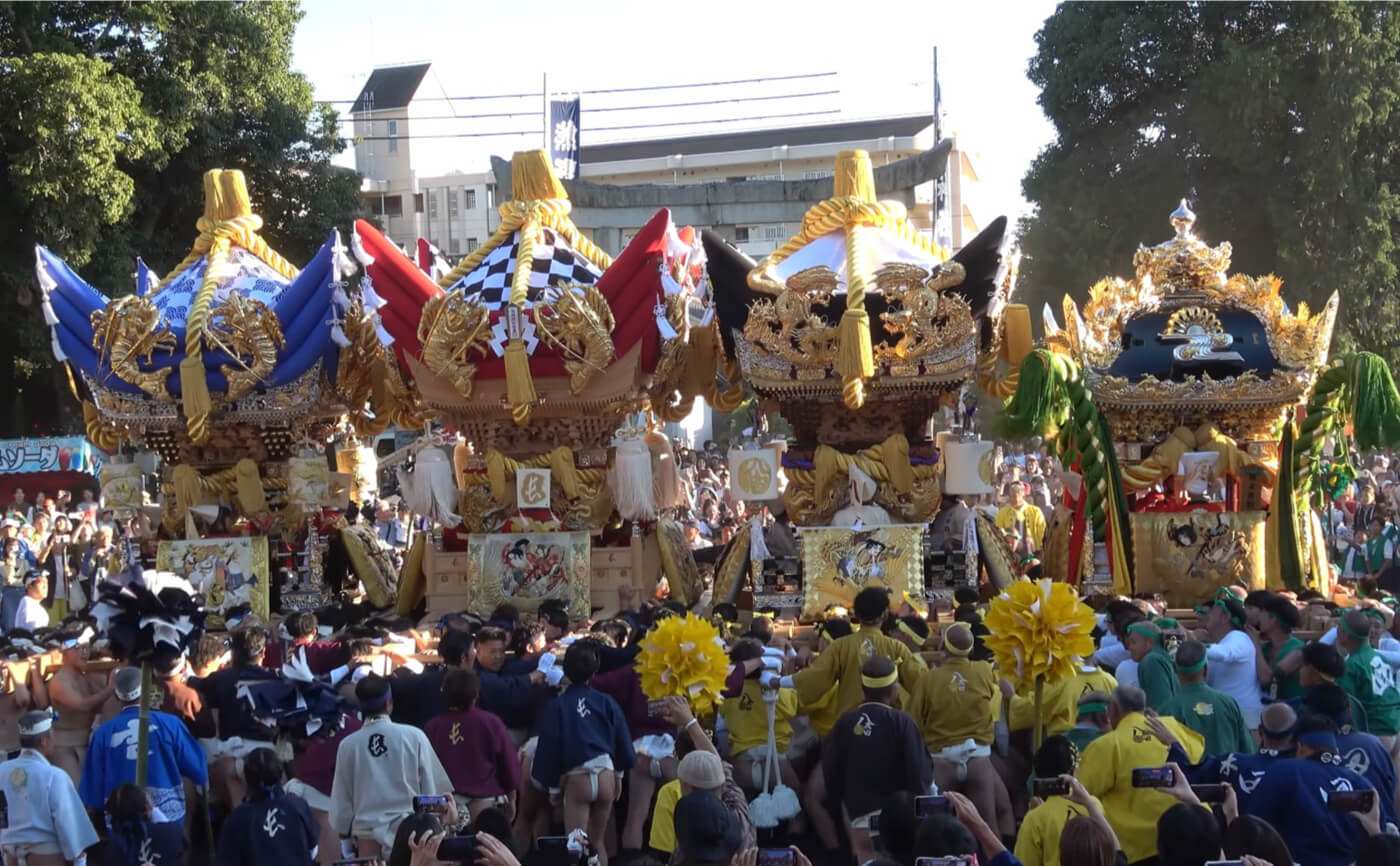
October is a pleasant month with mild weather and rich natural beauty, making it an ideal time for local festivals and community events across Japan. It’s also the peak season for rice harvesting and other agricultural activities, with traditional autumn festivals held in many regions.
In recent years, Western traditions like Halloween have also gained popularity, especially among young people, adding a modern touch to the seasonal atmosphere. Additionally, the favorable climate encourages outdoor activities, and “Health and Sports Day” promotes physical well-being and fitness.
Health and Sports Day – Promoting Wellness Through Exercise
Held on the second Monday of October, “Health and Sports Day” (formerly “Taiiku no Hi”) commemorates the opening of the 1964 Tokyo Olympics. This national holiday was established to encourage citizens to enjoy sports and improve their physical health.
Schools often host athletic meets or sports festivals, while local communities organize events such as marathons and health-related activities. People of all ages, from children to seniors, come together to engage in physical activities and foster social bonds through sports.
Autumn Festivals – Celebrating Local Traditions
October is also known for vibrant autumn festivals across Japan. These traditional celebrations express gratitude for a bountiful harvest and typically include processions of portable shrines (mikoshi), floats (dashi), folk dances, and performances of local arts.
Famous festivals include the Kawagoe Festival in Saitama and the Kishiwada Danjiri Festival in Osaka. Attending a local autumn festival offers a wonderful chance to experience regional culture and the warm hospitality of local communities.
Halloween – A New Cultural Tradition Among the Youth
Originally a Western holiday, Halloween has become a popular event in Japan, especially in urban areas. Late October sees costume parades and themed events, drawing crowds of young people dressed in elaborate outfits.
In places like Tokyo, the streets fill with revelers in costume, creating a surreal and lively atmosphere. However, the growing popularity has led to overcrowding issues in areas like Shibuya. On a more family-friendly note, many kindergartens and elementary schools also hold Halloween events where children wear costumes and enjoy treats, making it a fun tradition across all age groups.
November Events
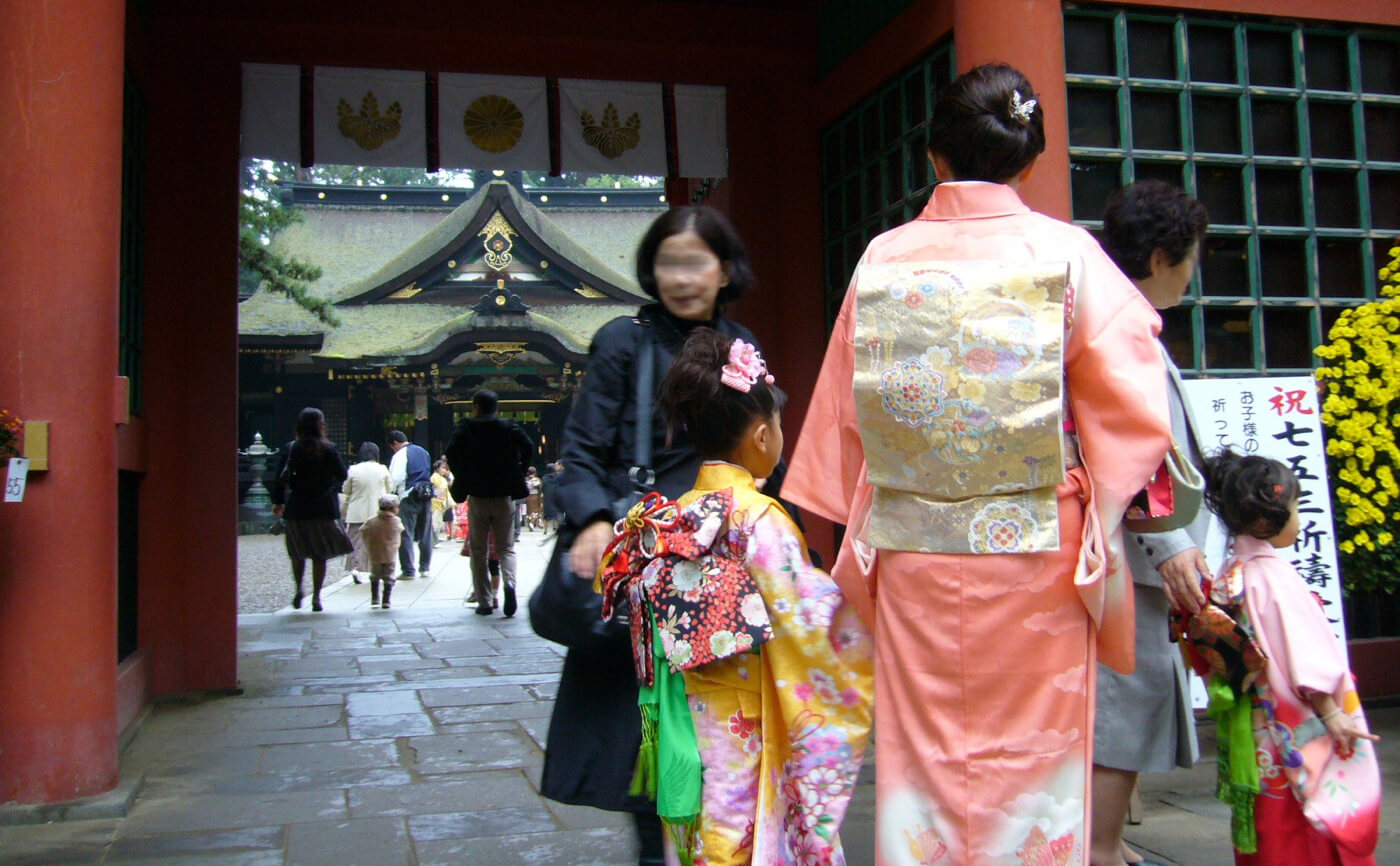
As autumn deepens, November marks the peak of natural beauty in Japan. With the vibrant colors of autumn foliage reaching their prime across the country, popular tourist spots, temples, and shrines come alive with visitors. This is a time to appreciate the changing seasons and reconnect with Japanese traditions and culture through various meaningful events.
From the celebration of children’s growth on Shichi-Go-San, to the appreciation of arts on Culture Day, and the seasonal tradition of momijigari (autumn leaf viewing), November offers a wealth of experiences that enrich the spirit.
Shichi-Go-San – Shrine Visits to Celebrate Children’s Growth
Shichi-Go-San (literally “Seven-Five-Three”) is a traditional rite of passage celebrating the growth of children at the ages of three, five, and seven. Families typically visit shrines around November 15 to pray for their children’s health and happiness.
Children dress in formal attire such as kimono or suits, and family commemorative photos are a common part of the celebration. A special candy called “Chitose Ame” (thousand-year candy), symbolizing long life and good fortune, is traditionally given to the children as part of the event.
Momijigari – Enjoying Japan’s Autumn Colors
Momijigari, or autumn leaf viewing, is the practice of enjoying the colorful transformation of trees as their leaves turn red, orange, and yellow. Famous destinations include Arashiyama in Kyoto, Irohazaka in Nikko, and Mount Yoshino in Nara, attracting countless visitors every year.
Autumn leaves have long been a motif in Japanese poetry and art, symbolizing the appreciation of seasonal change. The striking contrast between temples or shrines and vibrant foliage is especially popular, making these scenic spots highly sought-after by both locals and international tourists.
Culture Day – Honoring Arts and Cultural Activities
Held on November 3, Culture Day celebrates the arts and culture of Japan. It also marks the anniversary of the promulgation of the postwar Japanese Constitution, with the holiday dedicated to the promotion of freedom, peace, and cultural development.
On this day, schools and municipalities host cultural festivals, exhibitions, and concerts. Many museums and art galleries open their doors free of charge, offering an excellent opportunity to explore Japanese art, history, and creativity in a casual and accessible way.
Winter Events (December – February): A Season of Stillness and Reflection
Winter in Japan is a time when nature becomes quiet and people spend their days in calm reflection. This season is deeply rooted in customs that emphasize both closure and renewal. As the year draws to an end, there is a strong cultural focus on tidying up the past and preparing spiritually and practically for a fresh start.
The Japanese year-end and New Year traditions are especially important, with families and communities engaging in meaningful rituals to express gratitude, seek blessings, and reconnect with loved ones. Winter is not just a cold season—it is a sacred period of quietness, prayer, and hopeful beginnings.
December Events
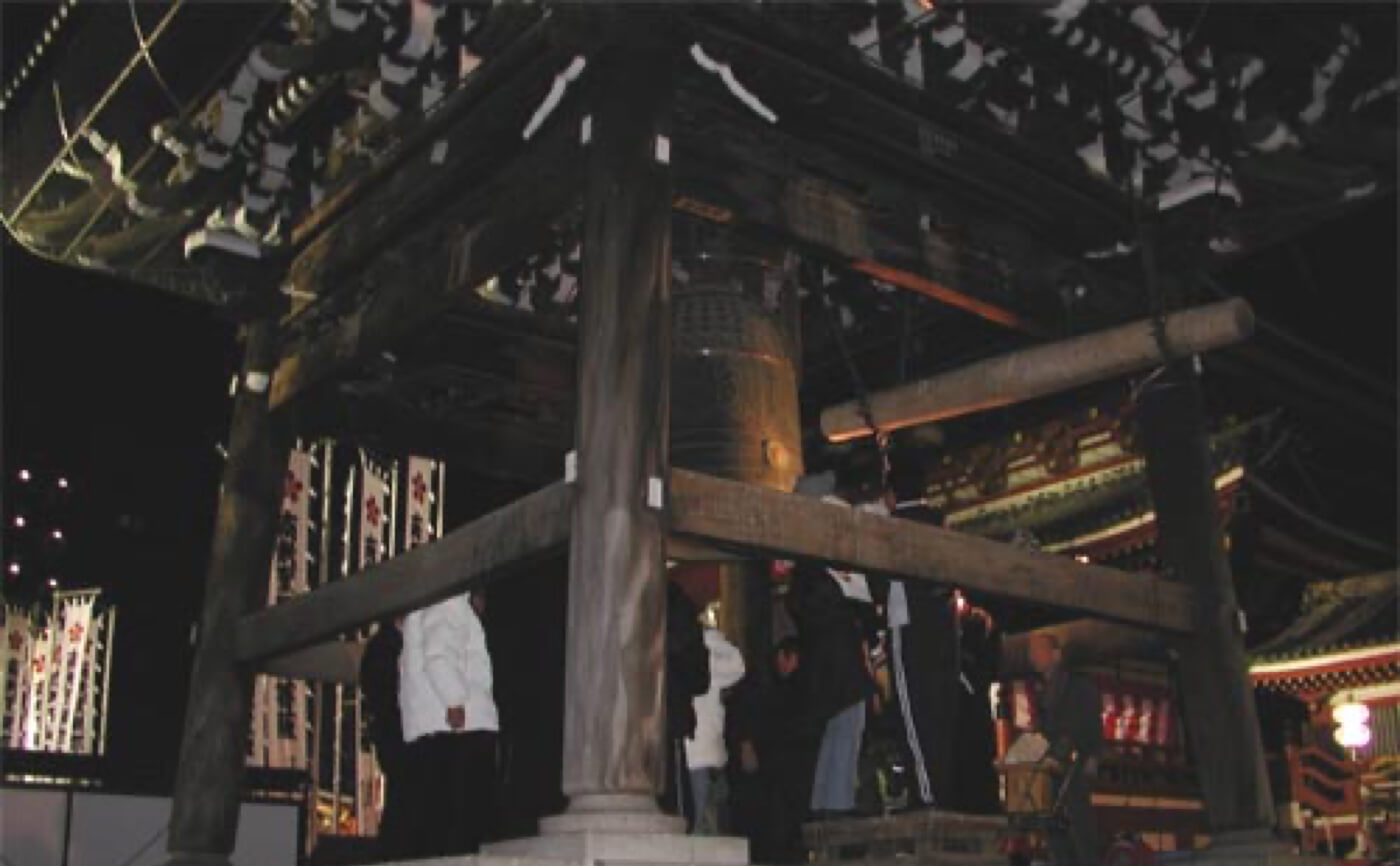
December marks the closing chapter of the year in Japan. Cities glow with festive lights, and people prepare for both Christmas and traditional year-end events. At home, the season begins with thorough cleaning, while at work, end-of-year parties and final meetings reflect a collective mood of wrapping things up.
The events of December blend Western influences—like Japan’s unique take on Christmas—with deeply rooted traditions such as New Year’s Eve rituals and preparations for the New Year. Seasonal customs like sending New Year’s cards and deep house cleaning reflect the importance of closure and readiness for a fresh start.
Christmas (Japanese Style) – A Romantic Celebration
In Japan, Christmas is celebrated less as a religious holiday and more as a romantic, festive occasion. December 24 and 25 are especially popular among couples, who enjoy illuminated displays and dine at upscale restaurants in celebration of the season.
At home, families enjoy “Home Christmas” with fried chicken and Christmas cake—a uniquely Japanese twist. Rather than religious tradition, Christmas in Japan is widely embraced as a cheerful winter event.
New Year’s Eve – Soba and Temple Bells
December 31, known as Ōmisoka, is a significant day in Japan. One well-known custom is eating toshikoshi soba (year-crossing noodles), symbolizing long life and a clean break from the past year’s hardships.
That evening, many visit temples to hear the Joya no Kane (New Year’s Eve bell), which is rung 108 times to cleanse the soul of worldly desires. This spiritual ritual ushers in the new year with clarity and reflection.
Year-End Preparations and New Year’s Cards
December is often called Shiwasu, reflecting the hustle and bustle of year-end preparations. Families conduct deep cleanings to welcome the household gods, while businesses hold closing ceremonies to acknowledge the past year’s efforts.
One uniquely Japanese custom is sending nengajo, or New Year’s postcards, a tradition that continues even in the digital age. Especially among older generations, this custom remains a heartfelt way to stay connected during the holidays.
January Events
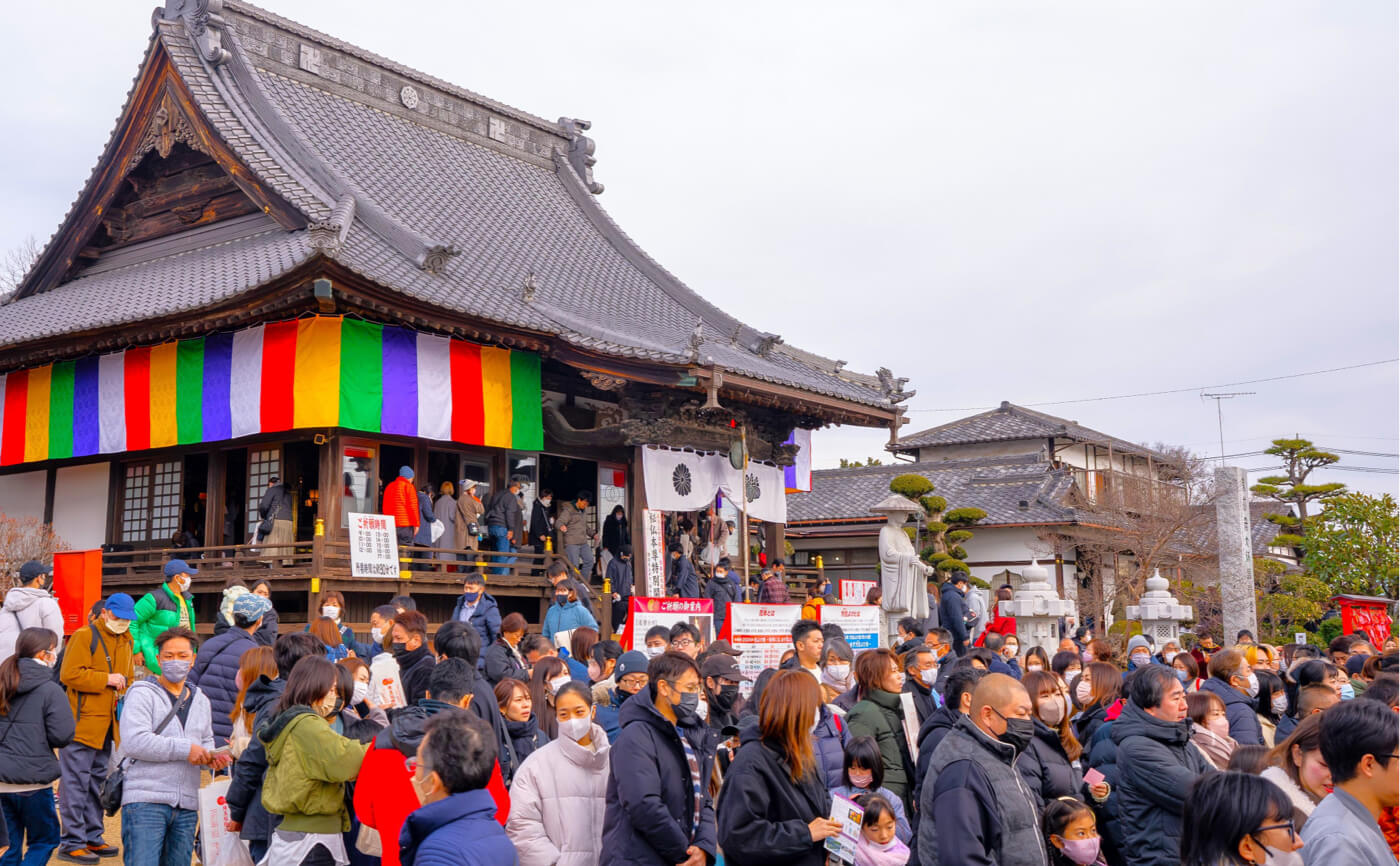
January marks the beginning of a new year in Japan and is filled with celebrations and traditions that hold deep cultural significance. The highlight is the New Year’s holiday, or Oshōgatsu, centered around January 1st. It is one of the most important events in Japanese culture, where families gather to pray for a peaceful and prosperous year.
Time-honored customs such as shrine visits, osechi ryōri (traditional New Year’s cuisine), and giving otoshidama (money gifts for children) continue to play a central role in this month, reflecting the very essence of Japanese tradition.
New Year’s Celebration – Japan’s Most Important Tradition
Starting on January 1st, Oshōgatsu is the most significant annual event in Japan. It is believed that a deity known as Toshigami-sama visits homes during the New Year, bringing blessings for health and prosperity.
Traditional decorations such as kadomatsu (pine decorations), shimenawa (sacred straw ropes), and kagami mochi (stacked rice cakes) are placed in homes and entrances. During the first three days of the year (called Sanganichi), people often return to their hometowns and spend time with family, making it a special and sacred time.
Hatsumōde – First Shrine Visit of the Year
Hatsumōde refers to the first visit of the year to a shrine or temple, where people pray for safety, health, and happiness. From New Year’s Day through the first few days of January, shrines across the country are filled with worshippers.
Many people draw fortunes (omikuji), purchase protective charms, or buy hamaya (arrows meant to ward off evil), starting the year with fresh hope and positive intentions.
Osechi Ryōri and Otoshidama – Food and Gifts of the New Year
Osechi ryōri is a traditional New Year’s feast made up of symbolic foods, each carrying a special meaning. For example, kuromame (black beans) symbolize diligence, kazunoko (herring roe) represents fertility, and kombumaki (kelp rolls) signifies joy.
Children eagerly anticipate receiving otoshidama, small envelopes containing money given by adults as a New Year’s gift. This cheerful tradition is a treasured part of New Year’s celebrations for families across Japan.
February Events

February is a transitional month that bridges the end of winter and the signs of spring. It features a unique blend of seasonal and cultural events. Traditional customs like Setsubun aim to drive away evil spirits and welcome the new season, while National Foundation Day honors Japan’s origins. Meanwhile, modern celebrations like Valentine’s Day have also become widely embraced, making February a month where tradition and contemporary culture intersect.
Setsubun – Driving Out Demons, Welcoming Fortune
Held around February 3rd, Setsubun marks the day before the beginning of spring according to the traditional Japanese calendar. On this day, families perform the ritual of mamemaki (bean throwing) to drive away evil spirits and invite good fortune for the year.
Chanting “Oni wa soto! Fuku wa uchi!” (“Demons out! Luck in!”), people throw roasted soybeans inside and outside their homes. Many temples and shrines also host large-scale events, often with celebrities participating in the bean-throwing.
In recent years, a newer tradition has emerged: eating an ehōmaki, a long sushi roll eaten silently while facing a lucky direction determined for that year.
National Foundation Day – Reflecting on the Birth of Japan
February 11th is National Foundation Day (Kenkoku Kinen no Hi), a holiday celebrating the founding of Japan. The date is based on the legendary ascension of Japan’s first emperor, Emperor Jimmu. While the historical accuracy is debated, the day serves as a time to appreciate the country’s history and cultural identity. It was officially established as a national holiday in 1966.
Valentine’s Day – A Unique Chocolate-Giving Tradition
Valentine’s Day on February 14th has taken on a uniquely Japanese form. Unlike in many Western countries, in Japan it is customary for women to give chocolate to men. There are different types of chocolates depending on the relationship—honmei-choco (for a romantic interest), giri-choco (obligatory chocolate), and tomo-choco (for friends).
In recent years, newer trends such as gyaku-choco (men giving to women) and jibun-choco (women buying premium chocolate for themselves) have gained popularity, making Valentine’s Day a versatile celebration enjoyed in workplaces, schools, and among friends.
Japan’s seasonal events reflect a deep harmony with nature, strong family bonds, and long-standing cultural and spiritual traditions. From admiring cherry blossoms in spring, to lively festivals in summer, vibrant autumn leaves, and the solemn welcoming of the New Year in winter—each season offers a chance to experience Japan’s unique sense of beauty and emotion.
If your visit coincides with one of these events, you won’t just be sightseeing—you’ll be stepping into the rhythms of everyday Japanese life. We encourage you to learn the meanings and stories behind each tradition to fully appreciate the richness of Japan’s seasonal culture.
